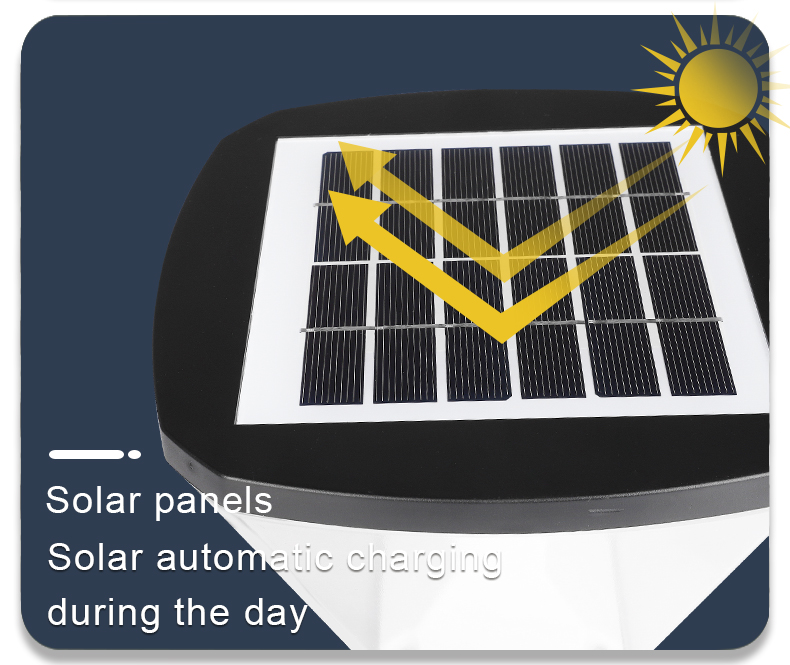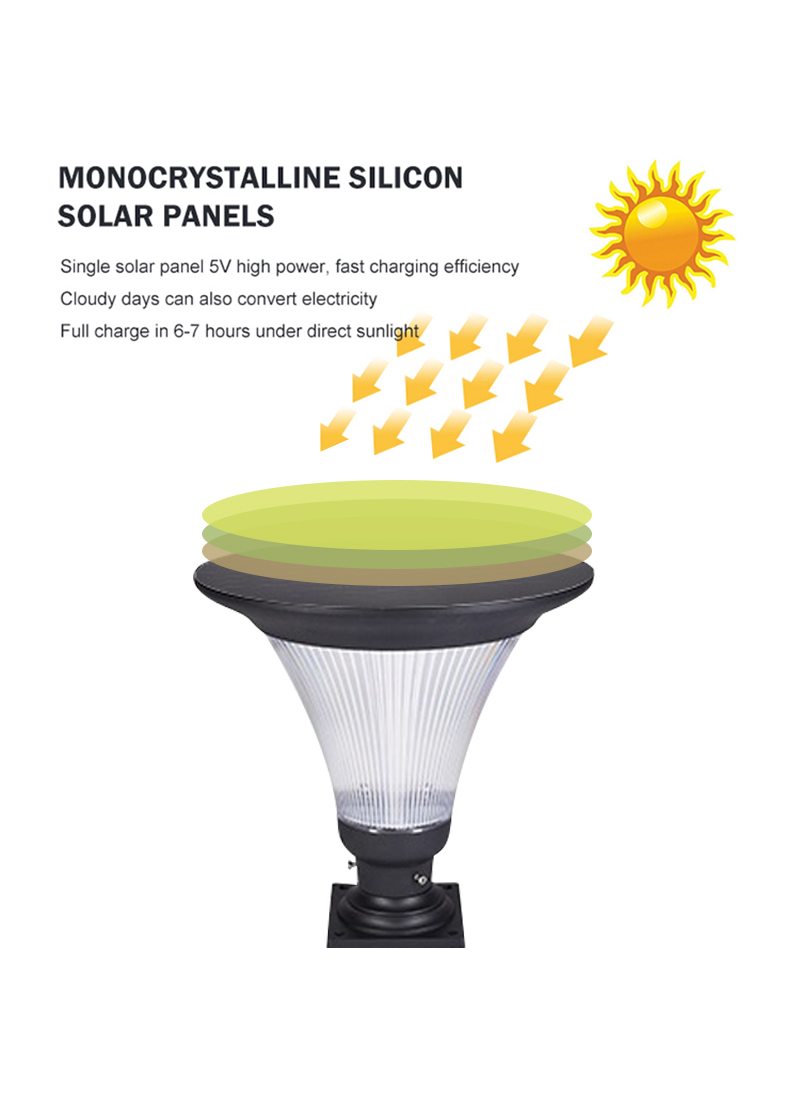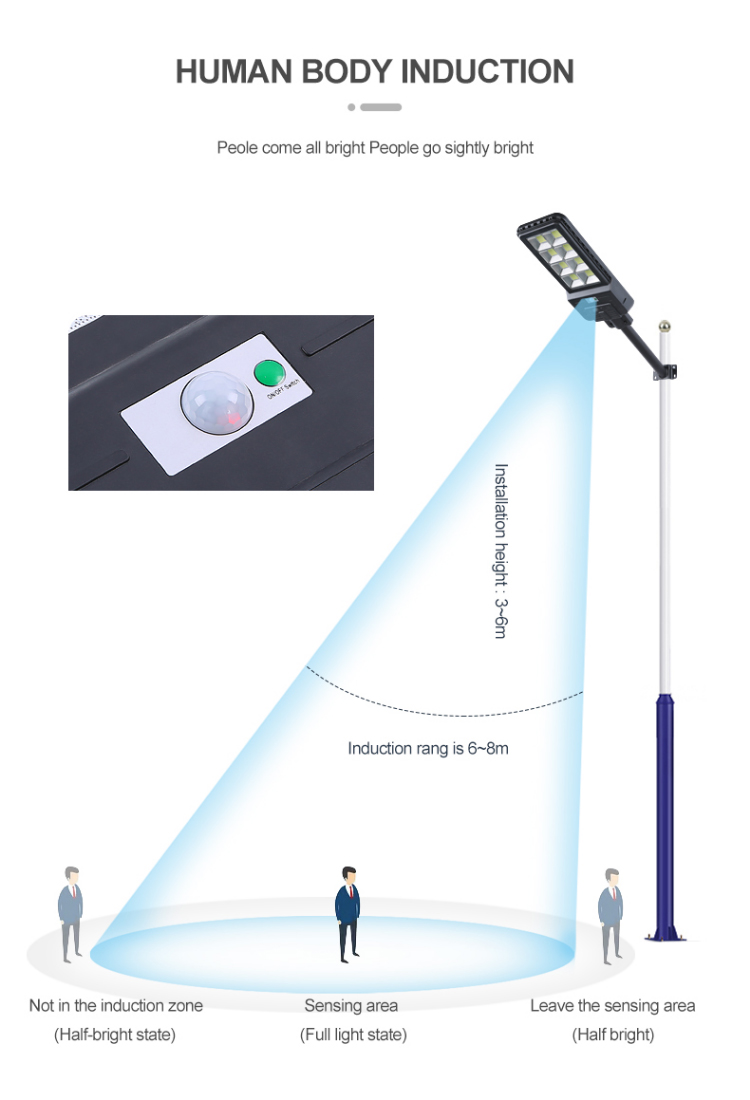Solar Lights are the most practical and energy-efficient solution for lighting up the outdoors. Apart from providing aesthetical value, they add safety and security to your home and doesn’t require any electricity to be powered on. They can be installed easily on driveways, pathways, walkways, walls, patios, decks, and lawns. So, in this article, we will Need to learn more about solar lights and how to choose the best one in the market?
As you probably know, the process of choosing and comparing products can be really overwhelming, especially if you are new to the whole solar powered lights market.
However, we are here to make your life much easier. In this article, we will teach you all the insider tips that you need to know in order to pick the best solar lights out there.

1. Solar Panel Type
As mentioned before, solar lights contain small solar panels. However, not all panels are alike.
There are various solar panels with different efficiency and life span.
As a general role, the best solar panels should have:
- High conversion efficiency
- Sturdy shield cover
- Long life span and warranty
Here are the most common types of solar panels:
A. Monocrystalline Solar Panels (Mono-SI)
With a conversion rate of up to 23.54%, which makes it the highest performance solar panel on the market nowadays.
Monocrystalline solar panels are made of quality silicone and well known for their efficient usage of space.
Though having a great conversion rate, the production of Monocrystalline panels results in a huge amount of waste contributing to a high cost per unit production.
Key Features
- Conversion Rate: Up to 23.54%
- High cost
B. Polycrystalline Solar Panels (p-Si)
Despite polycrystalline solar panels are also made from silicon, they are not as efficient as the monocrystalline ones.
The reason for that is polycrystalline solar panels contain impurities in the crystal, which highly reduces it’s efficiency to around 8%.
However, unlike monocrystalline, the production of polycrystalline panels releases a low amount of waste and consumes less raw materials and energy resulting in a fairly low cost per unit production.
However, in addition to low efficiency, one of the drawbacks of this type is it requires more space compared to the monocrystalline ones.
Key Features
- Conversion rate: Up to 16.5%
- Low cost
C. Thin-Film Amorphous Silicon Solar Panels (A-SI)
This type is produced by arranging thin-film solar panels in layers, which allows it to work in even the lowest sunlight conditions.
The downsides of this type are: it occupies a lot of space, and have pretty low performance.
Key Features
- Conversion rate: Up to 10%
- Portable and flexible
- Lightweight
- Low cost



-
2. Battery Type
Battery type is a very important factor to consider before buying a solar light.
You need to always opt for higher quality batteries, as they will last longer, have low maintenance, and made of durable materials.
There are many types of solar batteries, however, the most commonly used types in the solar powered lights industry are lithium-ion batteries, nickel-cadmium batteries, nickel-metal hydride batteries, and lead-acid batteries.
Here are the most common types of solar lights’ batteries:
A. Lithium-ion batteries
They are small, lightweight and most importantly, they have a very low self-discharge percentage. In other words, you can store them for months and they won’t lose their charge.
The average lithium-ion battery has a charge/discharge efficiency of 85% and can last for 500-1000 charge cycles.
Further, they resist the memory effect, which means that they won’t lose their charging ability over time and this is very important, especially for solar lights as in some cloudy days you won’t be able to fully recharge the battery.
The only downside to the Lithium-ion batteries is they tend to be pretty expensive in comparison to the other types.
Key features
- 500-1000 charge cycles
- Can be fully charged in 2-4 hours
- 10% self discharge a month
- No maintenance required
B. Nickel-cadmium batteries
The second item in this list is the Nickel-cadmium batteries. Sadly, this type suffers from the memory effect, and this is why they don’t last as long as the Lithium-ion ones.
Don’t get me wrong, nickel-cadmium is still a very good option as they can provide up to 1500 charge cycles before they lose their capacity.
Moreover, they are much cheaper than the lithium-ion batteries and tend to be 2-3 times less expensive making them a great choice for people with limited budgets.
Key features
- Up to 1500 charge cycles
- Can be fully charged within an hour
- 20% self-discharge a month
- Require maintenance once every 1-2 months
C. Nickel metal hydrid batteries
The nickel-metal hydride battery is another amazing option that can provide 300-500 charge cycles with a charge/discharge efficiency of roughly 75%.
Although this type tends to be heavier and has a high self-discharge ratio, they are quite cheap and can be recycled.
Key features
- 300-500 charge cycles
- Can be fully charged in 2-4 hours
- 30% self-discharge a month
- Require maintenance once every 2-3 months


-
3. Battery Capacity
Battery capacity is measured in terms of mAH and as a general rule, the higher mAH your battery has, the longer it will last. However, it will also take longer to get fully charged.
Having a high capacity battery is a must, especially in winters when the days are shorter and .
It’s important to mention that the solar light running time highly depends on the operating voltage.
For example, a branch of string solar lamps with 30 LEDs will drain the battery much faster than a branch with only 10 LEDs


-
4. Runtime Vs Charge time
This gives you an idea of the solar light efficiency. The best solar lights are the ones that have a high Runtime/Charge time ratio (>1).
In other words, they should have a short charging time compared to the runtime.
For example, the average solar light will fully charge within 6-8 hours and can offer 10-12 hours of light. This means the average solar light will have a Runtime/Charge time ratio of 1.5.

-
5. Brightness
Brightness is measured in lumens which is the illumination capacity of the bulb.
Solar bulbs are available in various lighting intensities from huge playing fields floodlights to small shade lights. Therefore, you need to know exactly how much lumens you need.
The number of lumens you need varies depending on:
- The area you wish to illuminate
- Coverage Distance
- How bright you want this area to be (high-intensity light or more vivid and smooth one)



















